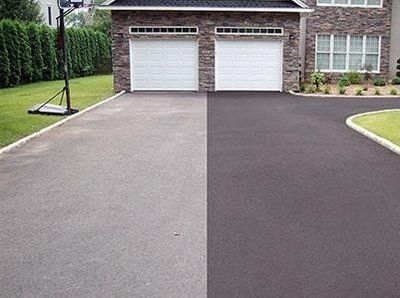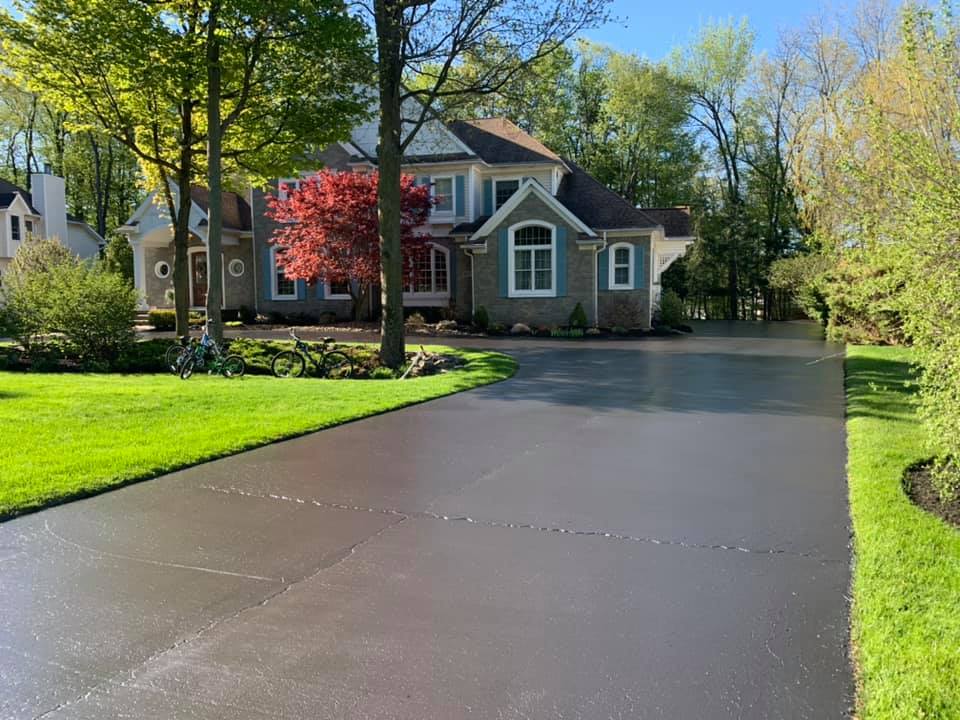Make Best Use Of Investment Returns: Angled Car Park Perfection with Asphalt Sealing
Make Best Use Of Investment Returns: Angled Car Park Perfection with Asphalt Sealing
Blog Article
Hot Mix Asphalt: A Sustainable Service for Pavement
Warm Mix Asphalt (HMA) has arised as a leading lasting selection for sidewalk remedies, using a myriad of ecological advantages and innovative technologies. As the demand for green construction techniques expands, checking out the nuances of HMA's sustainability can provide useful insights into the future of sidewalk remedies.
Ecological Advantages of Warm Mix Asphalt

Moreover, Warm Mix Asphalt aids to alleviate city heat island results. Its dark shade absorbs sunlight, lowering the amount of warm showed back right into the environment compared to lighter-colored sidewalks. This can lower ambient temperatures in city areas, reducing the demand for a/c and ultimately reducing power consumption.
Furthermore, Hot Mix Asphalt adds to improved stormwater administration. Its porous nature allows water to charge and penetrate the pavement groundwater products, reducing overflow and the threat of flooding. These ecological advantages make Hot Mix Asphalt a sustainable choice for paving highways and roads.
Power Performance in HMA Manufacturing
Is power effectiveness an important consider the manufacturing of Hot Mix Asphalt (HMA)? Definitely. Energy plays a considerable function in the production of HMA, influencing both price and environmental sustainability. One vital aspect of energy efficiency in HMA production is using warm mix asphalt (WMA) modern technologies (commercial parking lot paving). WMA permits the mixing and positioning of asphalt at reduced temperature levels compared to traditional hot mix asphalt, resulting in lowered power consumption throughout production. This procedure not only reduces fuel use yet likewise lowers greenhouse gas discharges, making it an extra eco-friendly option.
Additionally, innovations in plant innovations have actually resulted in more energy-efficient HMA production procedures. Modern plants are developed with features like recycled asphalt sidewalk (RAP) processing capabilities, effective burner systems, and improved insulation, all adding to power savings. By enhancing power use in HMA manufacturing, the industry can minimize its carbon impact while preserving high-grade pavement materials. Power effectiveness is, as a result, a crucial consideration in guaranteeing the sustainability of Warm Mix Asphalt manufacturing.
Recyclability of Hot Mix Asphalt
The recyclability of Warm Mix Asphalt (HMA) is an essential aspect of its sustainability and long-lasting environmental effect. HMA is one of the most recycled materials in the United States, with over 100 million lots of reclaimed asphalt pavement (RAP) being recycled yearly in brand-new pavement building. Reusing HMA provides several ecological advantages, such as reducing the demand for virgin materials, lowering power usage during manufacturing, and decreasing the amount of waste sent out to garbage dumps.
The process of reusing HMA includes grating the existing pavement, crushing it into smaller pieces, and mixing it with new aggregate and navigate to this site asphalt binder to create a recycled mix. Generally, the recyclability of HMA plays a significant duty in advertising sustainable practices within the pavement sector.

Long-Term Performance of HMA
Asphalt pavements demonstrate durability and strength over a prolonged duration, showing the long-term efficiency of Warm Mix Asphalt (HMA) The durability of HMA can be credited to its capability to withstand rush hour tons, harsh climate condition, and the impacts of aging. Studies have shown that properly designed and correctly constructed HMA sidewalks can last for 20 years or even more with routine upkeep. The trick to optimizing the long-lasting performance of HMA hinges on making use of premium products, complying with ideal techniques in construction, and implementing efficient upkeep approaches. Correct water drainage, regular inspections, and prompt fixings are important for maintaining the architectural stability of HMA sidewalks with time. Furthermore, improvements in HMA technology, such as making use of polymer-modified binders and cozy mix asphalt, have actually further boosted the toughness and longevity of HMA pavements. By prioritizing quality building and construction and upkeep techniques, HMA remains to show itself as a lasting and cost-effective option for resilient pavement facilities.

HMA: Longevity and Sustainability
Showing both sturdiness and sustainability, Hot Mix Asphalt (HMA) has actually ended up being a keystone in the building and construction of durable pavement infrastructures - click this link hot mix asphalt. HMA's sturdiness stems from its capability to hold up against heavy lots, rough climate condition, and high web traffic quantities, making it a dependable selection for highways, freeways, and flight terminal runways. The composition of HMA, which normally includes aggregates, binder, and filler, plays a critical duty in improving its durability and resistance to use and tear
In addition, HMA's sustainability hinges on its recyclability and energy-efficient manufacturing process. The ability to reuse reclaimed asphalt sidewalk (RAP) in new HMA combinations decreases the demand for virgin materials and reduces the ecological impact of sidewalk construction and upkeep. In addition, the energy performance of generating HMA depends on its reduced blending temperatures contrasted to various other sidewalk products, resulting in decreased energy consumption and greenhouse gas emissions.
Final Thought
To conclude, hot mix asphalt (HMA) supplies a sustainable service for sidewalk with its ecologically pleasant attributes. HMA's recyclability, energy efficiency in manufacturing, and long-term resilience make it a green option for roadway building and construction. By saving natural deposits, decreasing waste, and decreasing greenhouse gas discharges, HMA plays a vital role in promoting sustainability in framework advancement. Its capability to mitigate urban warmth island impacts further highlights its relevance in producing eco aware and resilient pavement systems.
HMA is Recommended Site one of the most recycled products in the United States, with over 100 million bunches of reclaimed asphalt sidewalk (RAP) being reused each year in new pavement building and construction.The process of reusing HMA entails milling the existing sidewalk, crushing it into smaller sized items, and mixing it with brand-new accumulation and asphalt binder to create a recycled mix.Asphalt sidewalks show toughness and resilience over an extensive duration, mirroring the lasting efficiency of Warm Mix Asphalt (HMA) Additionally, advancements in HMA innovation, such as the usage of polymer-modified binders and cozy mix asphalt, have actually further boosted the resilience and durability of HMA pavements. The capability to reuse recovered asphalt pavement (RAP) in brand-new HMA mixtures lowers the demand for virgin products and decreases the environmental impact of pavement building and maintenance.
Report this page